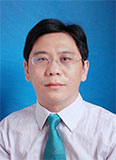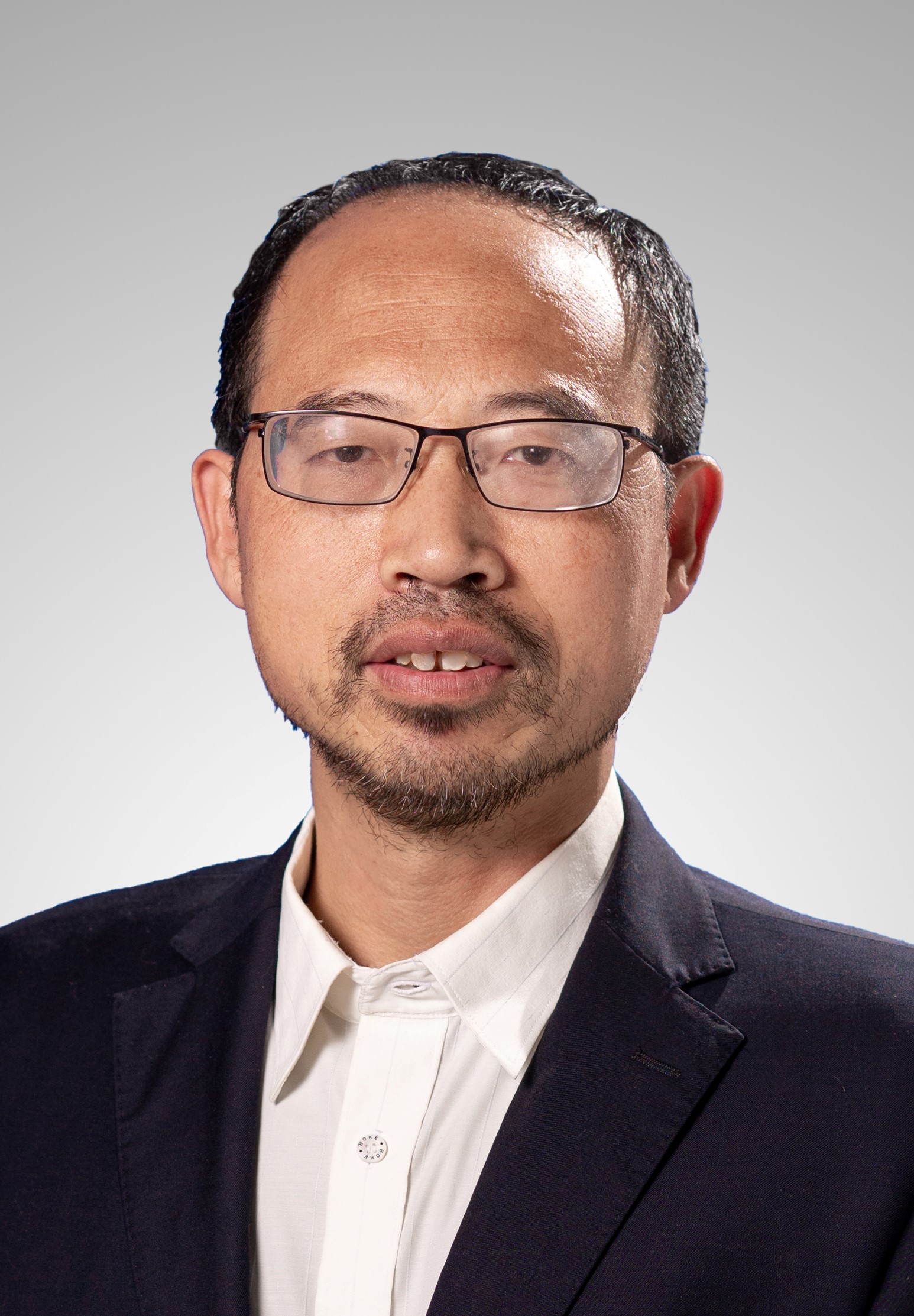Keynote Speakers/主讲嘉宾
Keynote Speakers/主讲嘉宾

Prof. Qingsheng Zeng
Nanjing University of Aeronautics and Astronautics, China
Research Area:
Communication and Electronic Systems, Noise Measurement and Modeling, Antenna Analysis and Design, Electromagnetic Compatibility and Electromagnetic Interference, Uwb Technology, Radio Wave Propagation, Computational Electromagnetics.
Introduction:
Qingsheng Zeng (S'97--M'02--SM'11) received his Ph.D. from University of Ottawa, Canada, and is currently a distinguished professor and PhD advisor of Nanjing University of Aeronautics and Astronautics (NUAA), an adjunct professor and PhD advisor of University of Ottawa, Carleton University, Université du Québec an Outaouais (UQO), and Institut National de la Recherche Scientifique -- Centre Energie, Matériaux et Télécommunications (INRS-EMT). He is the Chair of AP (Antennas and Propagation) / MTT (Microwave Theory and Techniques) Joint Chapter and Secretary of EMC (Electromagnetic Compatibility) Chapter of IEEE Ottawa, a Member of IEEE Canada Industry Relations Committee, and a senior member of IEEE.
题目:对客机内部无线网络电磁干扰威胁的研究
摘要:近年来随着无线网络在客机内部的推广使用,调查客机内部无线网络激发的电磁(EM)环境,为研究电磁干扰威胁提供量化依据就很有必要。这个报告将介绍利用实验数据和分析技术开发并验证了空客A319 电磁模型,将这个验证过的模型用于研究800兆赫无线网络激发的电磁环境,结果表明由A319电磁模型导出的峰值电场强度远低于最严重的RTCA/DO-160D辐射敏感性试验水平;耦合到沿机身长度的电缆上的电流远小于极为敏感的航空电子系统(如应变传感器)的最小工作参数。这些结果有助于量化和加强主要的研究结论:无线网络干扰飞行关键系统的可能性很低。本报告提出的模型可以方便地应用于各种类型的无线网络和飞机结构的电磁传播研究,所采用的建模方法可以用于其他大型复杂结构的电磁建模。

Prof. Qizhou Hu
Nanjing University of Science and Technology
Research Area: Transportation engineering
Introduction:
PhD supervisor, Doctor of Southeast University, Postdoctoral fellow of Tsinghua University, Visiting Scholar of the University of Hong Kong, Director of Nanjing University of Science and Technology High-Speed Railway Science Institute, Distinguished Professor of Henan University of Technology, Young and Middle-aged Academic Leader of "Qing Lan Project" in Jiangsu University, Winner of the provincial "Six Peak Talents" high-level talent project, the editorial board of the European Journal of International Transportation Engineering. The doctoral dissertation was awarded the outstanding doctoral dissertation of Jiangsu Province and the outstanding doctoral dissertation of Southeast University. Currently, he is mainly engaged in transportation engineering research.
In recent years, he has undertaken more than 30 national, provincial and ministerial scientific research projects, including hosting a Program of the National Natural Science Foundation of China, a Program of the China Postdoctoral Science Foundation, a National Statistics Bureau Research Scientific Project, a Project of the Ministry of education of Humanities and Social Science, a National Railway Administration Scientific Research Project. a Key Science and Technology Project of Henan, more than 10 Jiangsu Province Local Standard Projects, participated in a number of topics including 2 National 863 Projects and 4 National Science and Technology Support Projects. He has published more than 80 papers at major domestic and international academic journals and international conferences, published 6 monographs, edited 3 textbooks and 5 popular science books, and obtained more than 10 invention patents, won 2 provincial and ministerial awards.
Title: Feasibility Study of Super-Speed Rail
Abstract: Super-Speed Rail is a kind of vehicle that designed based on the theory of "vacuum pipeline transportation", and it has the advantages of ultra-high speed, high safety, low energy consumption, low noise, no vibration and no pollution. Super-Speed Rail may be a new generation of vehicles after cars, ships, trains and airplanes. Super-Speed Rail system includes two parts that vacuum pipe technology and magnetic levitation technology. Basic structure and attribute characteristics of Super-Speed Rail, this is aiming to solve the main problems of Super-Speed Rail, and discuss the feasibility of Super-Speed Rail.

Prof. Daxin Tian
Beihang University, China
Research Area: Internet of vehicles, group intelligence, intelligent transportation system
Introduction:
Young Yangtze River Scholar, youth fund gainer of National Natural Science Foundation of China outstanding, IEEE Senior Member, IEEE Intelligent Transportation Systems Society Member, IEEE Vehicular Technology Society Member, Senior Member of Chinese Computer Society, Senior Member of China Intelligent Transportation Association, deputy director of Beijing Key Laboratory of Vehicular Coordination and Safety Control, technology of integration and optimization of Urban Traffic Management, director of Vehicle Networking Laboratory, Key Laboratory of the Ministry of Public Security. He was selected as "overseas excellent talent", "young top talent", "Lantian new talent" and "Lantian new star" by the talent program of Beihang University, and was awarded as "young talents" by Beijing University and "outstanding young expert" by China Intelligent Transportation Association.
Title:Innovative Applications of 5G and Edge Computing in Cooperative Vehicle Infrastructure System (CVIS)
Abstract: Cooperative Vehicle Infrastructure System (CVIS) significantly orients the development of future ITS to improve the traffic efficiency and vehicle safety, but it puts forward more requirements for the communication and computing ability of the system. The emergence of 5G and edge computing makes it possible to implement a new generation of cooperative vehicle infrastructure technology. This talk presents general introductions of 5G and edge computing technologies and discloses their innovative application trends in CVIS. Moreover, the latest research and practice of our team on group communication and computing in vehicular networks are introduced by taking smart pole as an example. Further, we reveal that applications of 5G and edge computing would be the future trends for CVIS and ITS.

Prof. Chunming Li
Shengli College in China University of Petroleum, China
Research Area: Mechanical engineering and automation
Introduction:
He has many innovative achievements in mechanical principle, mechanical design, mechanical optimization design, mechanical innovation design, optimization method and innovation method.
One of his researchResearch results--《Fundamentals of mechanical control engineering》: Based on the vibration theory, the discipline theory system is integrated. Several concepts are improved. Based on the principle of equivalent substitution, the phase point and branch point position are exchanged. The knowledge point that the two can't be directly interchanged is added. The classical control theory and modern control theory are standardized for simple system and complex system control theory. The definition of closed loop and open loop is clarified. The maximum overshoot and stability margin degree are normalized to the maximum ratio and the stability margin. The order of the arrangement of Nyquist and Bode is analyzed. It can be understood in accordance with two ideas.
Topic: Analysis on Equivalent Substitution and Mechanical Control Engineering Basic Theory System
Abstract: According to the teaching content of the course "Fundamentals of mechanical control engineering", the following points are explained: in the system block diagram, how to exchange the position of the branch point and the added point; the classical and modern control theories should be called simple system and complex system control theories; the Laplace Inverse Transformation of the difference between the feedback signal and the input should be called "Deviation"; the open-loop and feedback are defined for the closed-loop control system. The maximum overshoot (quantity) should be called the maximum overshoot (ratio); the stability margin (degree) should be called the stability margin (quantity), that is, the phase margin and the amplitude margin; The teaching contents are arranged according to the sequence of mathematical basis, system representation, time response, frequency response, stability, correction, discrete system, etc.; the two analysis ideas of Nyquist diagram and Bode diagram sequence.



